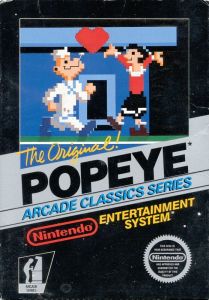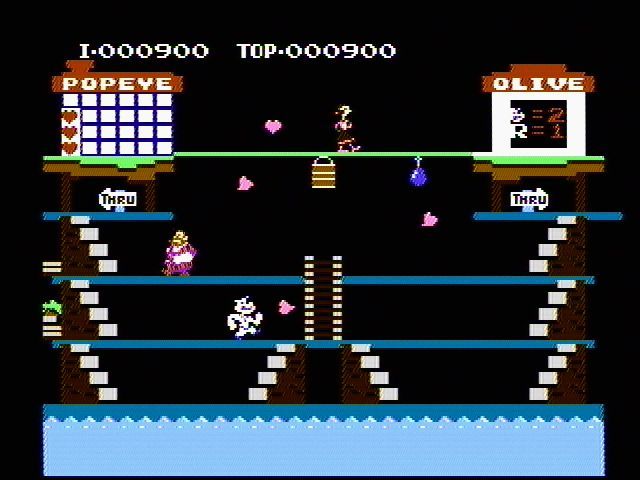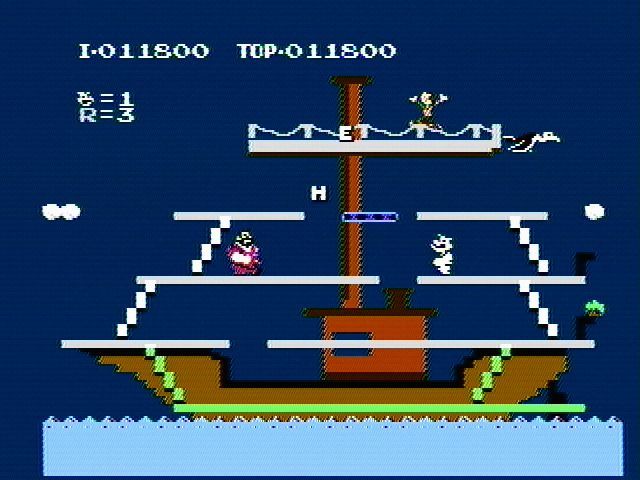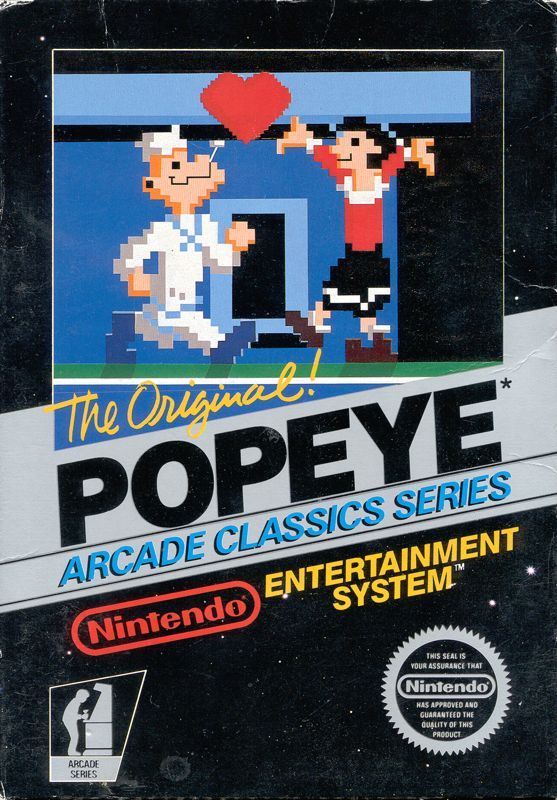
I played and reviewed the Atari 2600 port of Nintendo arcade game Popeye recently, and it made me curious enough to want to check out a more technically proficient adaptation.
Originally released as an arcade game in 1982, Popeye was a launch title for Nintendo’s Famicom console in Japan the following year.
Though not a launch title for the North American release of Nintendo’s 8-bit console (which was renamed the Nintendo Entertainment System, or NES), Popeye is an early enough first party title that it still utilises the famous black box/pixel art style that was an early trademark of NES game packaging.

Having never actually played the original arcade version, I was in the dark a bit with the overly ambitious Atari 2600 port. It felt a bit abstract in many ways, with the various elements of the game, such as cans of spinach and even objects being thrown at the hapless sailor man being mostly featureless blocks.
So it’s such a relief to play Popeye and be able to visually decipher what’s going on, not that it’s particularly complex or anything.

A single screen platformer in a similar vein to Donkey Kong, in Popeye the titular character must catch hearts, musical notes or letters (spelling ‘HELP’) being dropped by the love of his life, Olive Oyl.
Bluto (or Brutus, as he’s referred to in the game) is wandering about in a rage, however, and can knock you off platforms or fling stuff at you that’ll prove fatal.
Other obstacles and enemies pop up to make a nuisance of themselves over the three levels included, but you can always, once per stage, eat some tasty spinach to temporarily turn the tables.

It’s a really fun, very nicely done old school platformer of the type we so rarely see any more. The NES port looks lovely too, certainly by the standards of the arcade original as well as the admirable attempt by the Atari 2600 that would never be able to measure up from a visual standpoint.
It plays so well too; despite how good the Atari version is, certainly in comparison to other platformers in its library, the stiff control of the 2600 port is nowhere to be found, and it just feels so much more enjoyable on Nintendo’s 8-bit console.
Though it felt quite dated by the time it arrived on UK shores, enough time has passed that we can appreciate old school, single screen platform games such as Popeye on their own merits.
There’s some really neat, unique elements here (Popeye can’t jump, for example, which is unusual in a platform game) and the game provides enough variety in it’s (admittedly limited number of) level layouts and enemies that it becomes quite a charming and compelling, if perhaps repetitive, high score chase.
Enjoyed what you’ve read? Want to support my blog? There’s no pressure of course, but every penny helps to keep this site running, as I earn no income from my writing here (though I may earn small fees from affiliate links posted on my pages).
However, I’d be truly grateful for any support that you could offer – and it’s easy to do so at either of these links: Ko-Fi.com/geekmid or PayPal.
Any donations are truly appreciated – and I also appreciate you taking the time to read my articles. Thank you so much!

Help support me here!
All donations are gratefully received and will help me keep the lights on here – as well as help to keep my writing dream alive! Please be aware though: there’s no pressure. I just hope you’ve enjoyed reading my article!
£1.00






Leave a comment